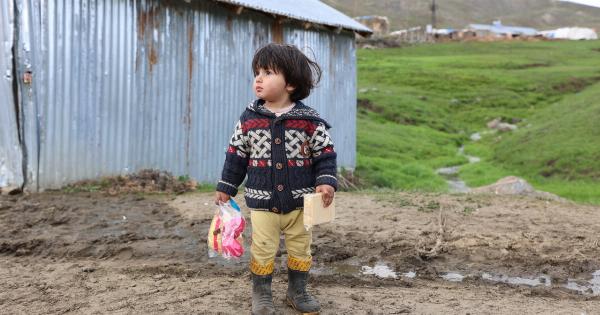Pneumonia is an acute respiratory infection that affects the lungs. It is caused by bacteria, viruses, or fungi. The symptoms of pneumonia include coughing, chest pain, difficulty breathing, and fever.
Although pneumonia can affect individuals of any age, it is particularly deadly for young children, especially those living in impoverished areas without access to proper medical care. According to the World Health Organization (WHO), pneumonia kills a child every 39 seconds, making it the leading cause of death for children below the age of five.
The Toll of Pneumonia on Children
Pneumonia takes a particularly heavy toll on children. The symptoms of pneumonia make it difficult for children to breathe, which can cause hypoxemia or low oxygen levels in the blood.
This can lead to severe respiratory distress, which may result in death. Children below the age of five who are malnourished are at a higher risk of developing pneumonia and, in turn, are more likely to die from the disease.
Causes of Pneumonia
Pneumonia is caused by a variety of different pathogens, including bacteria, viruses, and fungi. Some of the common bacteria that cause pneumonia are Streptococcus pneumoniae, Haemophilus influenzae, and Klebsiella pneumoniae.
Common viruses that cause pneumonia include influenza viruses, respiratory syncytial virus (RSV), and adenoviruses. Additionally, fungal infections can cause pneumonia in individuals with weakened immune systems or those who have inhaled contaminated soil or other environmental sources.
Prevention of Pneumonia
The most effective way to prevent pneumonia is through vaccination. Vaccines for Streptococcus pneumoniae and Haemophilus influenzae type b are available and recommended for children.
In addition, the influenza vaccine is recommended for individuals of all ages, particularly those who are at high risk of developing pneumonia. Proper hygiene, including frequent hand washing, can also help prevent the spread of respiratory infections that can lead to pneumonia.
Treatment of Pneumonia
Treatment of pneumonia depends on the cause of the infection. Bacterial pneumonia can be treated with antibiotics, while antiviral medication is used to treat pneumonia caused by viruses.
It is important to seek medical attention if you or your child experiences symptoms of pneumonia, as prompt treatment can help prevent severe complications and reduce the risk of mortality.
Global Efforts to Combat Pneumonia
The WHO has identified pneumonia as a top priority for global health efforts.
In 2019, the organization launched an initiative called “Global action plan for pneumonia and diarrhoea (GAPPD),” which aims to reduce child deaths due to these diseases. The plan includes strategies such as improving access to vaccines and promoting the use of antibiotics in treating bacterial pneumonia.
The Role of Socioeconomic Factors in Pneumonia Mortality
Socioeconomic factors, such as poverty and lack of access to health care, play a significant role in the high mortality rate of pneumonia among children in developing countries.
Children living in poverty are more likely to be malnourished, which weakens their immune systems and makes them more susceptible to pneumonia. In addition, families living in poverty often lack access to medical care, which can delay the diagnosis and treatment of pneumonia.
Conclusion
Pneumonia is a deadly disease that takes a particularly heavy toll on young children, especially those living in impoverished areas.
While there are vaccines and effective treatments available, access to these resources is often limited in developing countries. Global efforts to combat pneumonia must address the socioeconomic factors that contribute to its high mortality rate among children.































